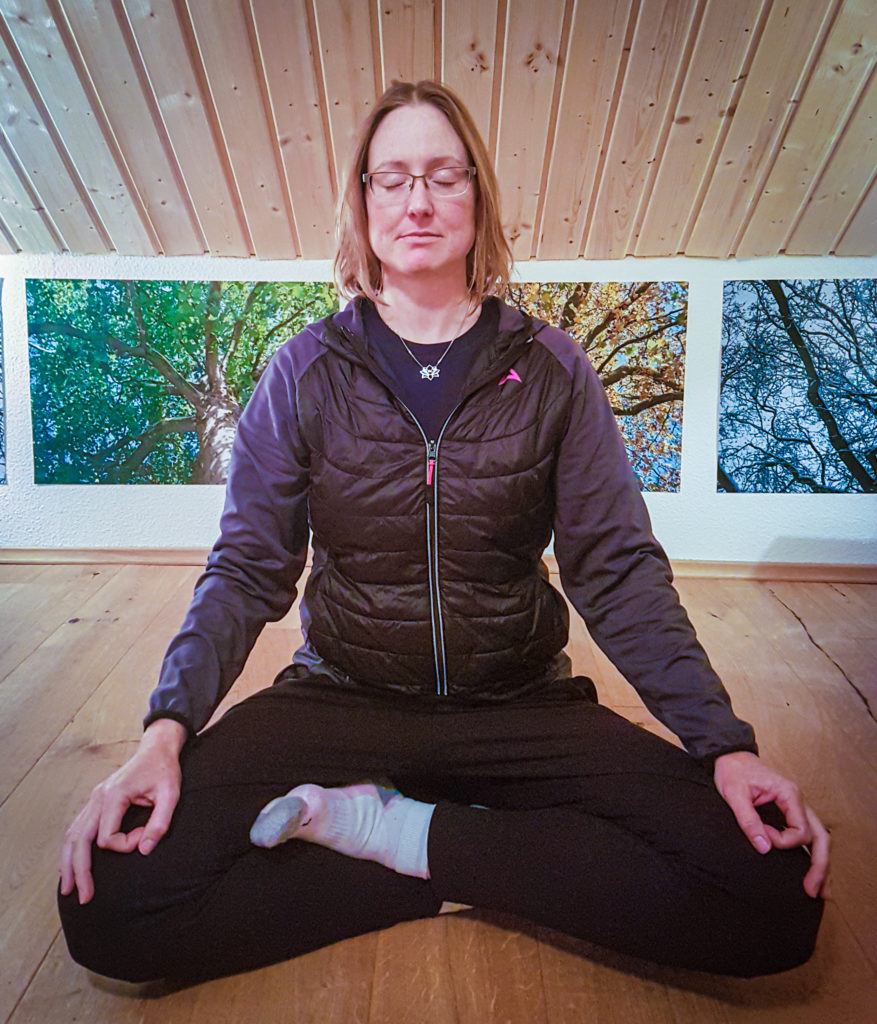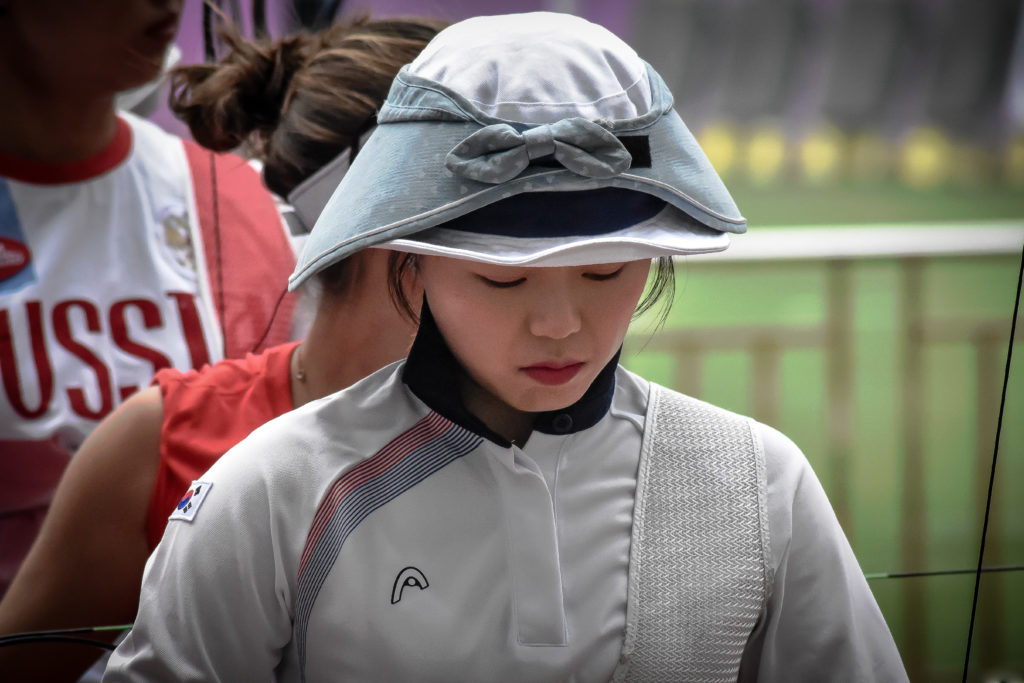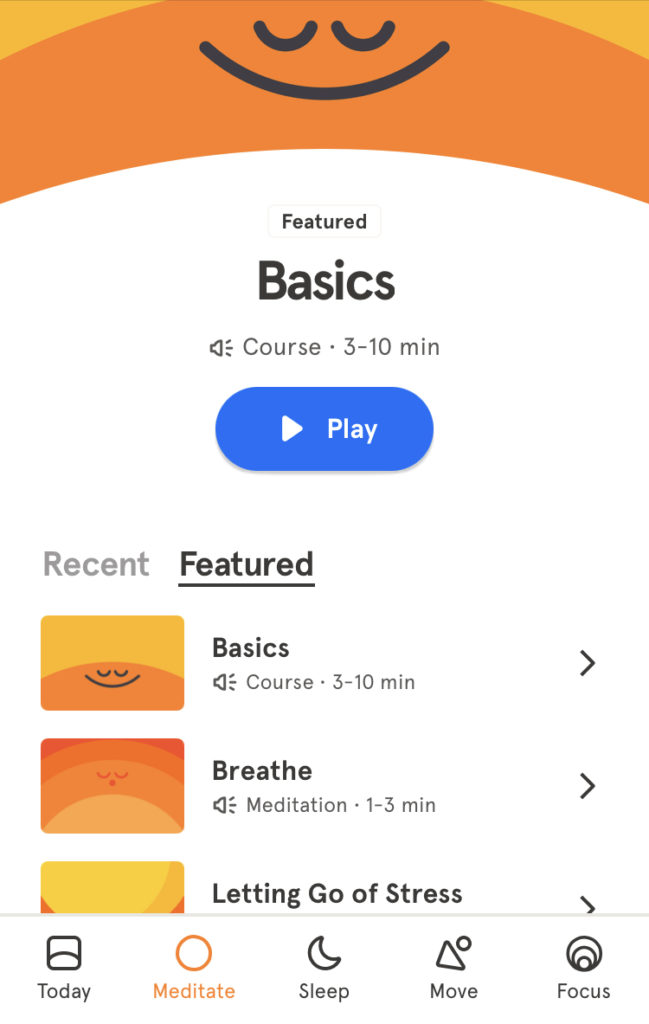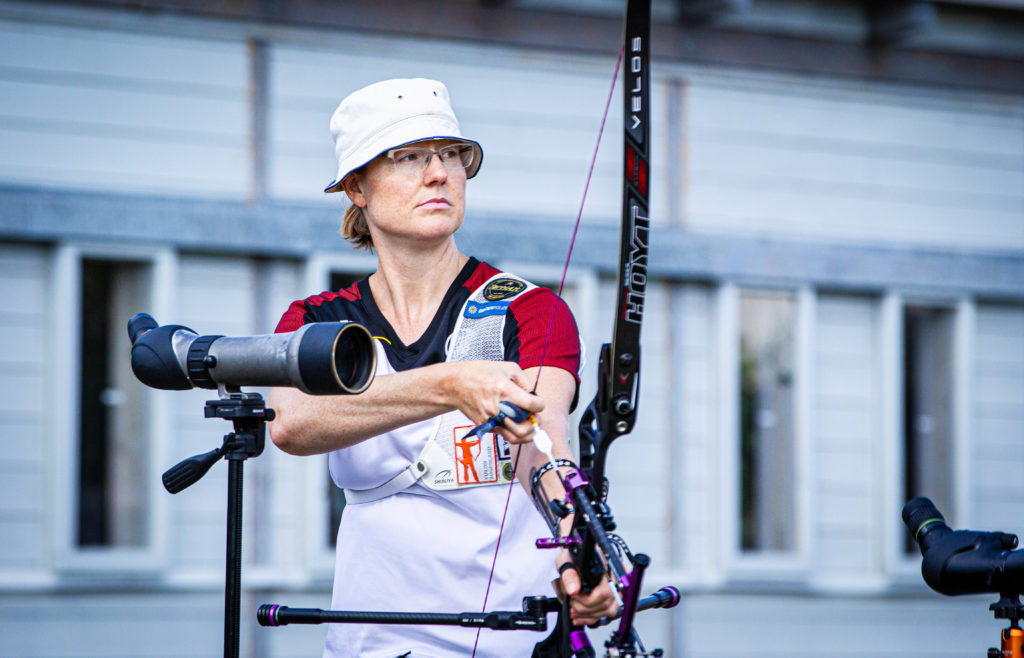Can meditation really help your shooting? Ethan Lowry examines the possibilities.

To be with oneself can be a terrifying endeavour. Our mind is made up of millions of synaptic junctions, with electrical impulses attributing to thousands of various physiological and psychological processes, which altogether result in our conscious existence.
The famous quote by the philosopher Descartes “I think therefore I am” not only makes specific reference to our basic existence, but in addition puts a responsibility on us as humans.
We rarely think of such intricacies, but being conscious of our existence forces us to consider our true potential. As exciting as this prospect can be, it can also be terrifying. As Carl Jung said, “When staring into the abyss, the abyss stares into you”.
Alas, we don’t just have to deal with our own thoughts and feelings, we also have to deal with how we as individuals fit into this complex world we live in. To make our way through such a mire requires a stoic ability to be both confident in ones self and to separate the wheat form the chaff when it comes to whatever life throws at us.
This can be a difficult task; a task which many fail to ever master. One modality, which has been used for centuries to aid such a task, is the art of meditation. In recent years, meditation has found a resurgence in popularity.
Proponents of it will often tout a multitude of benefits: better sleep, weight loss, improved focus, increased confidence, decreased stress and anxiety, and amelioration of depression. Furthermore, many involved in professional or elite sporting pursuits, or high-flying careers often attribute their success in these fields at least in part to meditation.
Many wishing to mirror such success have implemented similar meditation-based interventions. Coupled with the intuitive progression and increased use of mobile apps, meditation has become an incredibly popular daily practice for many people these days. But is it just another cyclical fad, or, is there merit in it?
Principles of meditation
Meditation can come in various forms, however no matter your exact method, most follow several key principles. These are far from exhaustive but they are important should you wish to explore various forms or combinations of methods.
The mind does drift, it overthinks and ‘underthinks’, it procrastinates and avoids complex, critical thought. In short in does a lot! Despite the many forms of meditation out there the goal for all is to focus your mind by hitting the reset button, being present with oneself and to optimise our mental clarity.
Elimination of outside distractions
Meditation can be performed on your own, in isolation, or it can be performed in a group setting. The former may be the more popular of the two, however, both are widely performed. Regardless, both individual and group meditation are usually performed in a quiet minimalist setting.
This isolation from the outside world is encouraged primarily to orientate and control your thoughts, minimising the influence of extrinsic factors. To facilitate in your own home there are several methods in which to implement, even in busy homes with pets, children – and frequently now, working from home.
First, finding a room with minimal noise, both audibly and visibly. Usually bedrooms, bathrooms and conservatories fit the bill quite nicely. Or outside, in a quiet reclusive area in nature.
For obvious reasons these places tend to be private but these also hold emotional value. The room or area should also be a comfortable setting. It’s difficult to concentrate on oneself when you’re lying on top of the TV remote.
Choosing an appropriate time of day is next. We have to immediately take into consideration our energy or fatigue levels. We want to be able to be as relaxed and present as possible but we must be able to do so consciously and most importantly without falling asleep!
As such avoid times of the day where you normally feel tired. Similarly we must avoid times where other responsibilities cannot be avoided e.g. getting children ready for school or during a football match.
Breath work
Virtually all iterations of meditative practice, whether modern or ancient, involve structured breathing. Without sounding facetious, that’s like saying that all forms of exercise, or simply living requires us to implement breathing techniques.
But we do need some more clarity as to what is going on when we breathe. We need to understand the implications behind nose breathing versus mouth breathing. High respiratory rates versus slow. Long breaths versus shallow. In a meditative state, breath is often the primary focus.
Breathing has been used for centuries, before any physiological understanding, to help calm those having panic attacks, asthma attacks and even to ameliorate pain. Whether you use an app or practice within a group setting you will often hear phrases such as “focus on your breath” or, “if you get distracted, return to your breathing”.
To focus on your breath implores you to take active control of a what is normally a very passive physiological process. A goal of meditation is to remind us as practitioners of what we can control compared to those things that remain outside of our control.
Breathing is a rare thing that tends to straddle both sides of this fence, and being able to bring it under our control in a meditative state gives us outstanding mental clarity for when things are not going our way.
As mentioned above most meditation involves minimising outside distraction, and breathing can be an excellent means of achieving this. It’s truly amazing, the sheer amount of data our other senses constantly feed us.
When performing any complex task we have to be able to filter what data is unnecessary from what data that is necessary and to so can make all the difference. What outside factors are going to help us achieve ours goals compared to what factors are going to hinder us.
Breathing techniques are the first line of defence at all the drivel which is preventing us from growing. Each breath in is another barrier or wall to these distractions coming in.
As to specifics, you should always endeavour to breathe through your nose. There is an abundance of research to indicate the benefits of this, demonstrating that doing so appropriately stimulates the parasympathetic nervous system, whilst simultaneously decreasing stress hormones and improving circulation. An outstanding piece of work on breathing in general can be found in the recently published book ‘Breath’ by James Nestor.
Time
The length of time one meditates for plays an important role in mental and physical progression. When beginning the meditative journey dedicating five minutes to the practice is often more than enough. But the goal is to progress it in length, slowly over several weeks.
This can take a surprisingly long time to implement and should be treated with respect. As the duration increases, it becomes increasingly difficult to be relaxed and present but discipline will prevail.
Methods of meditation
Multiple methods exist in the modern era as how to actually perform meditation. Each person will have their own preference and currently there is no ‘standard’ as to which is more effective. One must choose which fits in with their schedule and which is more appropriate in terms of their responsibilities and financial circumstances.
Apps
As with every other health and fitness intervention it comes as no surprise that meditation has enjoyed a recent increase in popularity, especially within the last year.
There are a multitude of apps available on all platforms however the two most popular remain Headspace™ and Calm™, both of which follow similar formats as stated in the aforementioned principles.
Each require a marginal monthly or yearly subscription with various levels of discounts available for families, students, healthcare workers etc. With meditation, consistency is key and apps can be ideal for facilitating this as we can set numerous reminders and notifications.
They can also be very good at tracking our progress which is key for forming habits. Visualising our consistency even in a rudimentary graph on your phone can be tremendously positive.
Clinician or Coach lead
For more personal or in-depth meditation practice, some choose to seek professional assistance in their journey. These can be done in an individualised setting or group setting. Typically the principles remain the same ,however it allows specifically for a more psychotherapeutic and/or philosophical approach.
Many practitioners implement meditation to go hand-in-hand with an underlying philosophy or religious identity. Clinicians are in an ideal situation to provide this. It is imperative however that you find someone who is both responsible for and respectful to your goals.
Application in a sporting setting
You may already have noticed the benefits of meditative practice when it comes to sport and specifically archery. Whether outdoor or indoor, your archery training and competition requires optimal performance all-round. The importance of focusing specifically on the task or target at hand cannot be overstated.
Minimising the extent to which necessary factors influence your ability to do so is equally if not more important. The mental calculations and physical responsibilities of the body are trained in combination through meditative practice to be both resilient enough to avoid these outside distractions and to rise to the responsibility of dealing with your given task.
Many of the sporting greats implement such techniques, and when we copy their training regimes, nutritional practices and even their attire, why would we forgo this mental responsibility?
Meditation case study: Lisa Unruh
Olympic silver medallist Lisa Unruh recently won the indoor World Cup stage at Nimes, the first major event on the 2021 calendar. She has been using meditation for many years. In this interview, given to the German magazine Bogensport, she opens up about the practice – and gives tips for beginners.
When did you start meditation and what was your goal?
My life has been focused on archery for years. When I started meditation at the end of 2015, my goal was focused entirely on sport. I wanted to improve my ability to concentrate and focus. So I read a book called Meditation for the Defiant. Numerous exercises are described, including ones to sharpen awareness.
What are these exercises about?
On an ordinary day, we do many unconscious things; like we are running computer programs. We get up in the morning, brush our teeth, and a repetitive sequence of habitual actions begins. For some of the exercises, you simply start out by changing these habitual routines and rituals. It’s little things. For example, when you get up you decide not to brush your teeth first as usual, but to shower first.
When you then start brushing your teeth, you will be aware of how you are holding the toothbrush in one hand, and that morning you decide to change this ritual as well and take the toothbrush in the other hand. They are simple changes that you can implement with little effort, and the aim is to be more aware of the automated actions of the daily routine.
In fact, meditation does not have its effects on the ability to concentrate and focus immediately after the first practice. The process takes weeks and months. But at some point you find yourself in a situation in which you are focused and calm, and you remember the past in which similar situations threw you off.
You need time to have such an experience, but you will experience it and notice the change in the process. At that moment, you realise that meditation has brought you further.
Do you feel an effect that sets in immediately after meditation?
I have to admit that in situations with extremely high stress levels it can be difficult to switch off your thoughts while meditating. If I do not succeed in breaking free from these rushing thoughts, I will not get into the relaxed state of meditation. But in all other cases relaxation sets in, and then meditation can also be used, for example, to help you fall asleep better.
Can you describe some of the exercises you do?
I do various exercises, including breathing exercises. I count my breaths. I perceive how the abdominal wall rises and falls when I breathe, or I perceive the flow of cool air in my nose when I breathe in. Meanwhile I am free of thoughts; if thoughts arise, I simply push them on and concentrate again on counting and perceiving the points mentioned.
This exercise trains you to keep your focus and concentration. At the beginning I only counted the breaths to ten and then counted them backwards. I now count up to 40 breaths. Thoughts come up again and again today, which I calmly push aside and realign the focus. Then I do the Kapalabhati exercise that comes from yoga.
It is also a breathing exercise in which you forcibly exhale. I suddenly expel the air I breathe, and in doing so I push the diaphragm inward. It is perhaps comparable to breathing when we get water in our nose while swimming and then suddenly exhale through our nose.
This is followed automatically by inhalation. These breathing exercises are also important because we often switch to shallow breathing in everyday life and especially under stress.
In the morning I start with exercises that have a waking effect, in the evening I do exercises with a calming effect. There are days on weekends when I do without it. Then I listen to my body, and sometimes I notice that I don’t need the exercises at the moment. But I meditate about five days a week.
Are there meditations that you use situationally, for example as a short meditation in a competition?
I also use the breath counting that I described in competitions, for example. If you do these exercises regularly, breath counting takes effect after just two minutes.
Do you have a tip for getting started?
Everyone can also do the breathing exercises very easily. It is important to have a comfortable meditation posture so that you are not distracted by uncomfortable sitting, because that simply has a disruptive effect. (I have a meditation block that I sit cross-legged on, but you do not have to meditate cross-legged. Counting while breathing is another good tip for getting started, because counting alone avoids disturbing thoughts.
Do you think that the meditation experiences helped you in Rio?
Yes, definitely. And in Rio I meditated every day – really every day.





